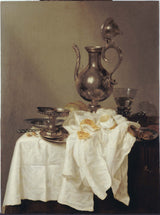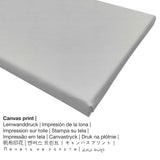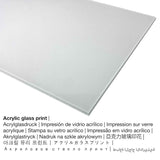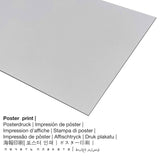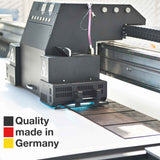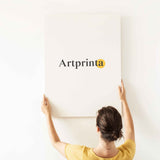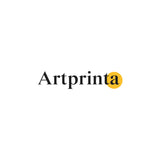Willem Claesz. Heda, 1643 - Ndụ ka nwere olulu - ọmarịcha nka
Ụtụ gụnyere. Mbupu gbakọrọ na ndenye ọpụpụ.
The classic art painting was painted by the artist Willem Claesz. Heda. The 370 year old version of the masterpiece was made with the size: Height: 79 cm, Width: 59 cm. Agba mmanụ onye na-ese ihe ji mee ihe dị ka ihe osise. Date and signature - Bottom middle, in the corner of the table: "HEDA 1643" was the artwork's inscription. Besides, this piece of art belongs to the Petit Palais - Musée des Beaux-arts de la Ville de Paris's digital collection - the museum is an art museum in the 8th arrondissement. With courtesy of: Petit Palais Paris (license: public domain).Creditline of the artwork: . Moreover, alignment is Eserese ma nwee akụkụ nke 3: 4, nke pụtara na ogologo ya dị 25% dị mkpụmkpụ karịa obosara.
Họrọ ụdị ihe onwunwe gị
Na nhọrọ ndọpụta ngwaahịa ị nwere ike họrọ ihe na nha nke nhọrọ gị. Họrọ n'ime nhọrọ ngwaahịa ndị a ugbu a ka ị kwekọọ na mmasị gị na nha na akụrụngwa:
- Mbipụta akwụkwọ mmado (ihe kwaaji): Our poster is a printed canvas with a slight finish on the surface. Please note, that depending on the absolute size of the poster we add a white margin of something between 2-6cm around the print motif, which facilitates the framing with your custom frame.
- Metal (aluminium debond mbipụta): This is a metal print manufactured on aluminium dibond with a true depth. A direct Direct Print on Aluminum Dibond is your best introduction to art prints made on aluminum. The white & bright parts of the original artpiece shine with a silk gloss but without the glow.
- Mbipụta enyo acrylic: A glossy acrylic glass print, which is sometimes denoted as a plexiglass print, makes your favorite artwork into great décor. The major advantage of an acrylic glass art print is that contrasts and also minor image details become more exposed with the help of the fine tonal gradation in the print.
- Mbipụta kwaaji: A UV printed canvas applied on a wood stretcher frame. Canvas Prints have the great advantage of being relatively low in weight, which implies that it is easy to hang the Canvas print without the support of additional wall-mounts. A canvas print is suited for all types of walls.
Ederede iwu dị mkpa: We try whatever we can in order to describe our products with as many details as possible and to display them visually. Nevertheless, the tone of the print products and the print result can differ marginally from the image on your monitor. Depending on your settings of your screen and the condition of the surface, not all colors can be printed as realisitcally as the digital version shown here. Considering that our art reproductions are processed and printed by hand, there may also be slight deviations in the motif's exact position and the size.
Nkọwapụta ihe
| Nkewa edemede: | nka nka |
| Usoro mmeputakwa: | dijitalụ mmeputakwa |
| Production usoro: | mbipụta dijitalụ |
| Production: | German mmepụta |
| Ụdị ngwaahịa: | a na-achọ |
| Ngwaahịa were: | mgbidi mma, mgbidi gallery |
| Nhazi nke ihe nka: | nhazi ihe osise |
| Ụdị anya: | (ogologo: obosara) 3: 4 |
| Nkọwa nke oke ihe onyonyo: | ogologo bụ 25% mkpụmkpụ karịa obosara |
| Akwa ngwaahịa dị: | Mpempe akwụkwọ, akwụkwọ mmado (akwụkwọ akpa), mbipụta enyo acrylic (nwere ezigbo mkpuchi iko), mbipụta ọla (aluminium dibbond) |
| Nhọrọ nke akwa akwa n'elu etiti ihe ndọtị (mbipụta akwa akwa): | 30x40cm - 12x16", 60x80cm - 24x31", 90x120cm - 35x47", 120x160cm - 47x63" |
| Mpempe iko acrylic (nwere ezigbo mkpuchi iko) nha: | 30x40cm - 12x16", 60x80cm - 24x31", 90x120cm - 35x47", 120x160cm - 47x63" |
| Mpempe akwụkwọ mmado (akwụkwọ kwaaji) nha: | 30x40cm - 12x16", 60x80cm - 24x31", 90x120cm - 35x47" |
| Mpempe akwụkwọ Dibọn (ihe alumnium): | 30x40cm - 12x16", 60x80cm - 24x31", 90x120cm - 35x47" |
| Nhazi nke nka nka: | na-enweghị etiti |
Iberibe nkọwa nka
| Aha nka: | "Still life with pitcher" |
| Nhazi: | sere |
| Okwu nche anwụ: | nka ochie |
| Century: | 17th narị afọ |
| Emepụtara na: | 1643 |
| Afọ nka: | ihe dị ka afọ 370 |
| Usoro nka izizi: | Agba mmanụ |
| Nha izizi (ọrụ nka): | Ogologo: 79 cm, obosara: 59 cm |
| Akara mbinye aka: | Date and signature - Bottom middle, in the corner of the table: "HEDA 1643" |
| Ụlọ ihe ngosi nka: | Petit Palais - Musée des Beaux-arts de la Ville de Paris |
| Ebe ngosi nka: | Paris, France |
| Dị n'okpuru: | Petit Palais - Musée des Beaux-arts de la Ville de Paris |
| Ụdị nka nka: | ngalaba ọha |
| Site n'aka: | Petit Palais Paris |
Banyere omenka
| aha: | Willem Claesz. Heda |
| Ọrụ onye na-ese ihe: | onye na-ese ihe |
| nhazi ọkwa: | nna ukwu ochie |
| Nwụrụ anwụ: | 88 afọ |
| Amụrụ n'afọ: | 1594 |
| Ebe omuma: | Haarlem |
| Nwuru: | 1682 |
| Nwuru na (ebe): | Haarlem |
Copyright right, Artprinta (www.artprinta.com)
(© - Petit Palais - Musée des Beaux-arts de la Ville de Paris - www.petitpalais.paris.fr)
In the seventeenth century, the Dutch still lifes enjoyed a great reputation. Some painters like Willem Claesz Heda, became specialists in this kind pictural.Ici, Heda illustrates the theme of the meal served. The jug placed in the center, is the structuring element of the array and a pattern recurrent in the painter's work. It allows the artist to demonstrate the virtuosity in rendered materials, games shine and reflections. On it, he inserted the reflection of a window, which creates a point of light in the middle of panneau.Heda purifies his compositions, carefully selecting each item that will be treated with illusionism. Lemon and reveals to the viewer her wet and juicy pulp, glass contains water with a striking transparency, etc ... If these representations of meals served, with the presence of the ewer, are found many times in the composition Heda, the vertical size of the picture and framing tightened around this white cloth constitute them, an originality.
In the early twentieth century, the painting was in the collection of Charles Vincent Ocampo. This Argentine collector donated to the City of Paris, subject to usufruct, 1931, and raised the usufruct in 1942.
Still Life, Pitcher, Glass, Cup, Plate, Watch, Lemon, Fruit, Tablecloth

